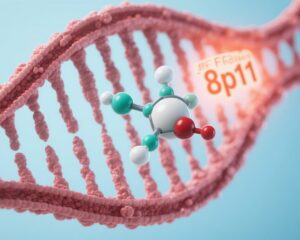Highlight
- The live-attenuated intranasal RSV vaccine (RSVt) elicited robust neutralizing antibody responses in RSV-naive infants and toddlers.
- Both low-dose and high-dose vaccine regimens were generally well tolerated with no immediate systemic adverse events post vaccination.
- Solicited site and systemic reactions were slightly higher in vaccine groups compared to placebo but were predominantly mild and transient.
Study Background and Disease Burden
Respiratory syncytial virus (RSV) is a leading cause of lower respiratory tract infection in young children worldwide, resulting in significant morbidity, hospitalization, and mortality, especially in infants and toddlers. Despite decades of research, effective RSV vaccines suitable for this vulnerable population remain limited. Live-attenuated intranasal vaccines offer a promising approach by mimicking natural infection and inducing mucosal and systemic immunity without causing disease. RSV/ΔNS2/Δ1313/I1314L (RSVt), developed by Sanofi, is a candidate live-attenuated intranasal RSV vaccine designed specifically for infants and toddlers aged 6 to 18 months. The vaccine aims to provide safe, effective immunization early in life to reduce RSV-related illness burden.
Study Design
This phase I/II randomized, placebo-controlled clinical trial was conducted across multiple international sites in the United States (22 sites), Chile (2 sites), and Honduras (2 sites). The study enrolled infants and toddlers aged 6 to 18 months in four cohorts; this report focuses on cohort 4, the primary cohort. Participants were randomly assigned to receive two intranasal vaccinations on day 0 and day 56 of either low-dose RSVt, high-dose RSVt, or placebo. The primary safety endpoints were the occurrence of unsolicited systemic adverse events within 30 minutes following vaccination and solicited injection site and systemic reactions within 28 days. Immunogenicity endpoints included measurement of geometric mean titers of RSV A serum neutralizing antibodies among RSV-naive participants at baseline, determined after the first (day 56) and second vaccinations (day 84).
Key Findings
Among 180 total participants, 61 received low-dose RSVt, 58 received high-dose RSVt, and 61 received placebo. At baseline, 115 participants were RSV-naive (45 low-dose, 32 high-dose, and 38 placebo). No unsolicited systemic adverse events were reported within 30 minutes post vaccination in either RSVt dose group, indicating a favorable immediate safety profile.
Solicited site reactions such as nasal congestion or irritation were reported in 83.1%, 74.5%, and 68.9% of participants after the first vaccination in the low-dose, high-dose, and placebo groups, respectively; after the second vaccination, rates were 75.6%, 77.8%, and 55.6%. Likewise, solicited systemic reactions such as fever or irritability were reported in 79.7%, 73.2%, and 77.0% after dose one, and 66.7%, 66.7%, and 48.1% after dose two, respectively. Most reactions were mild and transient, consistent with vaccine reactogenicity.
Immunogenicity analysis revealed that among RSV-naive subjects, geometric mean neutralizing antibody titers against RSV A were markedly increased after vaccination. Post first vaccination, titers reached 83.7 (95% CI, 49.5 to 142.0) in low-dose and 79.4 (95% CI, 47.2 to 134.0) in high-dose groups versus 20.6 (95% CI, 16.4 to 25.9) in placebo. Post second vaccination, titers further increased to 142.0 (95% CI, 86.4 to 232.2) and 107.0 (95% CI, 70.0 to 163.0) in low- and high-dose groups, respectively, compared to 26.3 (95% CI, 18.8 to 37.0) in placebo. These data demonstrate robust boosting and vaccine-induced immunity.
Expert Commentary
This study provides encouraging evidence supporting the safety and immunogenic potential of the RSVt live-attenuated intranasal vaccine in a critical pediatric population. The lack of immediate systemic adverse events post vaccination and generally acceptable reactogenicity profile affirm its tolerability. Importantly, the observed increases in serum neutralizing antibodies among RSV-naive infants indicate effective priming of the immune system.
While serum neutralizing activity is a recognized correlate of protection for RSV, further studies are needed to confirm clinical efficacy against RSV infection and disease. The study’s multinational design including diverse populations strengthens generalizability; however, additional trials assessing durability of immunity and protection in real-world settings are warranted. The live-attenuated, intranasal route may also provide mucosal immunity which could be critical in preventing viral entry and transmission.
Conclusion
The RSV/ΔNS2/Δ1313/I1314L (RSVt) vaccine represents a promising intranasal live-attenuated candidate for RSV prevention in infants and toddlers. This phase I/II randomized trial demonstrates its favorable safety and tolerability profile, along with robust immunogenicity at both low- and high-dose regimens. These findings support continued clinical development of RSVt to address the substantial unmet need for effective pediatric RSV vaccines.
References
Idoko OT, Vargas SL, Bueso A, Rivera D, Edward H, Simon M, Banooni P, Berger S, Janicot S, Vercasson C, Pallardy S, Nteene R, Adhikarla H, Gerchman E, Gasparotto M, Gallichan S, Rivas E, Buchholz UJ, Collins PL, Sesay S, Gurunathan S, De Bruijn I, Dhingra MS. Live-Attenuated Intranasal RSV Vaccine in Infants and Toddlers. NEJM Evid. 2025 Sep;4(9):EVIDoa2500026. doi: 10.1056/EVIDoa2500026. Epub 2025 Aug 26. PMID: 40856556.


